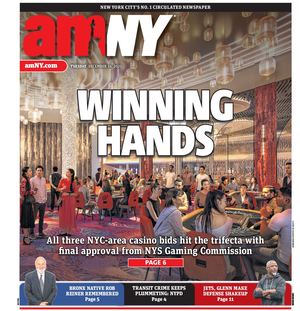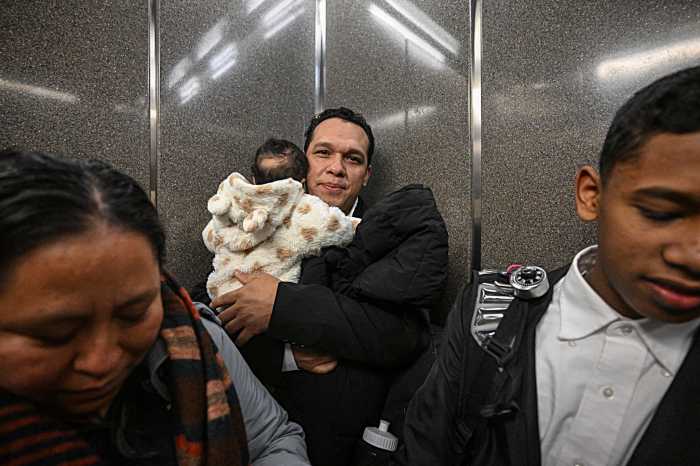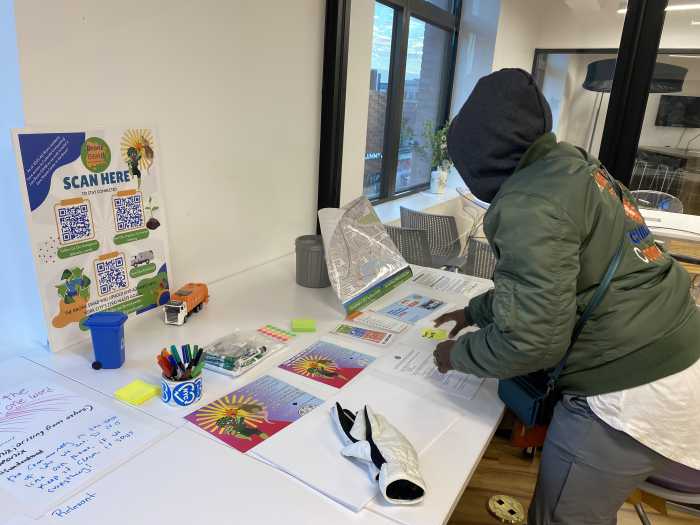The city’s tech sector has emerged as one of the fastest rising industries in the last decade, employing close to 300,000 people, but the number of women in the field hasn’t been growing at the same pace.
Although women account for more than half of the workforce in the city, only 38% of tech company employees are female, according to a study by Silicon Valley Bank in July. Over the last few years, however, the city and both the private and academic sectors have collaborated on a series of projects to diversify the workforce through enhanced training and promoting better recruitment programs.
“This is a concerted effort to address challenges and access to talent,” said Kristen Titus, who leads one of those projects, the city’s Tech Talent Pipeline. “If you hear anything from the CEOs it’s that they would love a more diverse tech force.”
A recent study by SmartAsset.com using 2013 census data found New York just the fifth best city for women in tech nationally, but experts say New York’s work in closing the gender gap is setting an example, giving a face to a female driven tech industry. The city’s digital director, the Department of Information Telecommunication and Technology commissioner and the city’s chief tech officer are all women.
The leading factor behind the gap is training, as fewer women are going into engineering, computer science and other related fields. In 2012, only 12% of computer science undergraduate degree recipients nationwide were women compared to 37% in 1985, according to the National Center for Women in Technology.
Reshma Saujani, the founder of Girls Who Code, a New York-based nonprofit that provides STEM training programs to young women, said there has been a negative and false stereotype that the tech industry is a only a man’s game.
“One of our biggest goals is to teach young women that computer science isn’t just for geeky guys locked in a dark basement and that anyone from the prom queen to the bookworm can learn to code,” she wrote in an email.
She said organizations such as Girls Who Code have been working with the city to improve STEM classes and keep girls engaged in science.
Kristen Day, the associate dean of Academic Administration at NYU Polytechnic School of Engineering, said the school hired five tenure tracked female professors.
“We are focused in a deep way in this issue. We’ve seen our numbers grown over the last few years,” Day said, adding that 26% of undergrad and 27% of graduate students in engineering majors are women at NYU Poly.
Of course, training and education are just part of the equation. Mayor Bill de Blasio has made diversifying the tech industry part of his agenda and has created several programs, including the Tech Talent Pipeline, which trains New Yorkers and connects them with the thousands of tech companies throughout the city that are looking for new employees, such as Tumblr, Kickstarter and Verizon.
Titus said no other city has taken on an initiative as expansive and the results have already been apparent as 55% of the program’s participants are women.
Earlier this month, the city’s Small Business Services released a report that showed that although men own one-and-a-half times more businesses than women in the city, New York leads the nation in female entrepreneurs with 359,000 women-owned businesses.
SBS launched the WE NYC program last week to assist 5,000 women entrepreneurs with free forums and business services.
“It’s a [good] starting point,” Deputy Mayor Alicia Glen said. “I think we really see this as an opportunity to use our resources to help women start their businesses, to get training and work at these businesses and get access to mentoring and networking.”
Private companies have also launched their own programs, such as Capital One’s recent partnership with General Assembly, an educational tech center based in Flatiron.
The two organizations are currently training 10 minority and women fellows. Isatu Conteh, 26, of Washington, D.C., is one of those fellows who came to New York looking to develop HTML skills for a future in design.
“All the jobs I looked for in graphic design asked for HTML skills,” she said. “I didn’t know anything and learned it. I felt it was useful for my creativity,” she said.
Carolyn Berkowitz, president of the Capital One Foundation, said companies seek a more diverse office, because they want to reflect the city’s population. “We know it is important that as tech changes the world we need to adapt,” she said. “The whole nation benefits when we have a skilled workforce.”
The experts were all confident that the gender gap will quickly shrink over the next decade and other cities will look to New York for inspiration.
“Make no mistake the creation of the Tech Talent Pipeline and other programs puts us ahead,” Titus said.






































